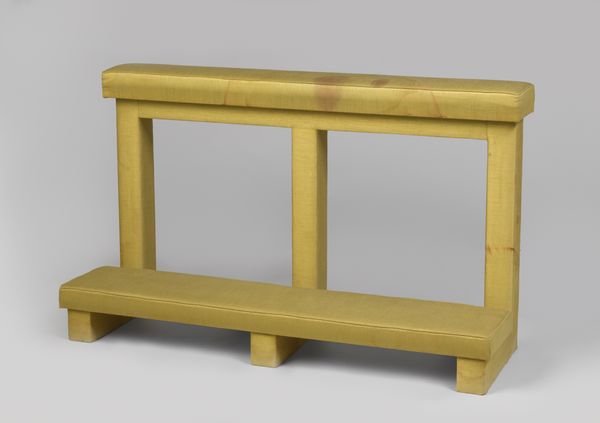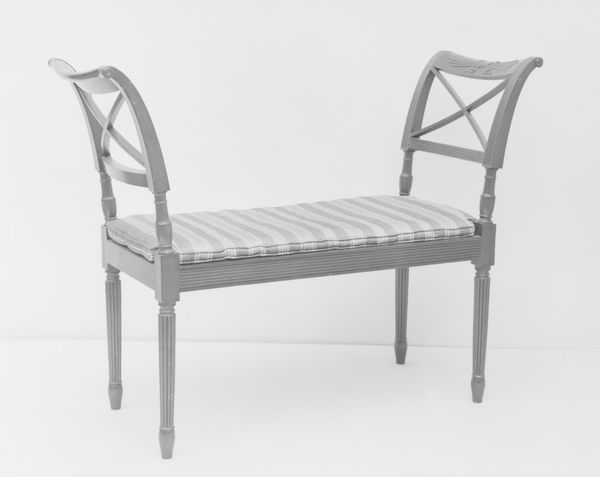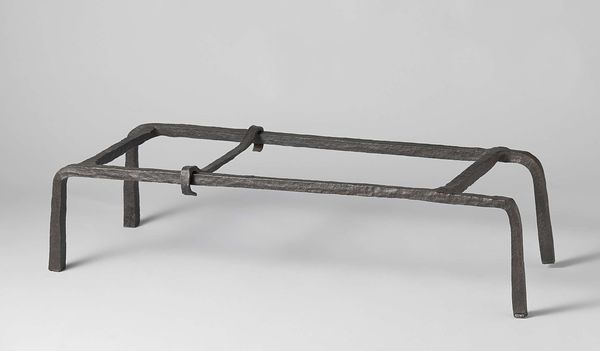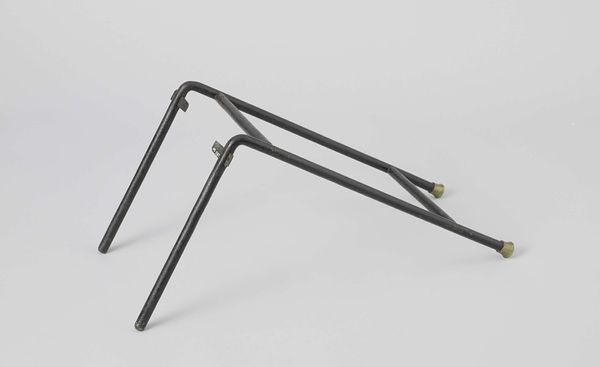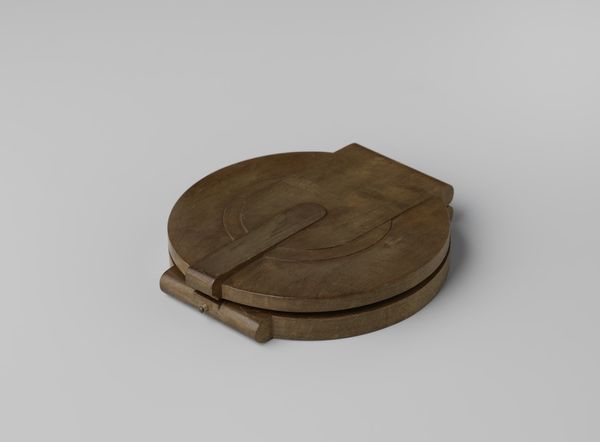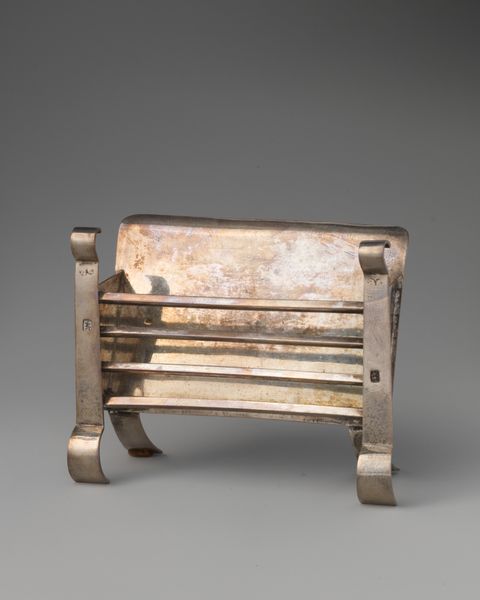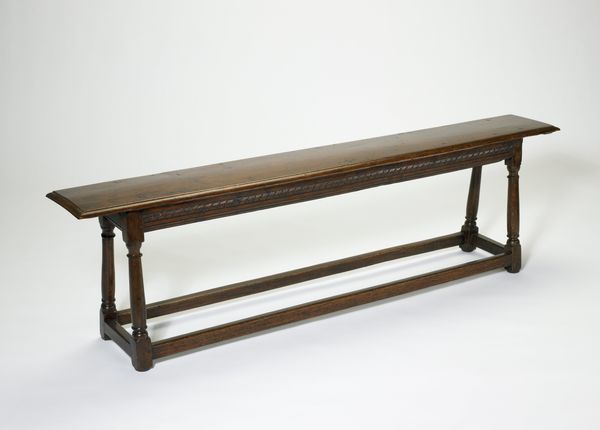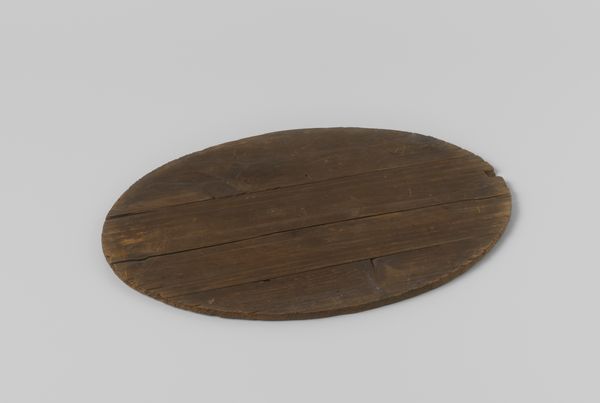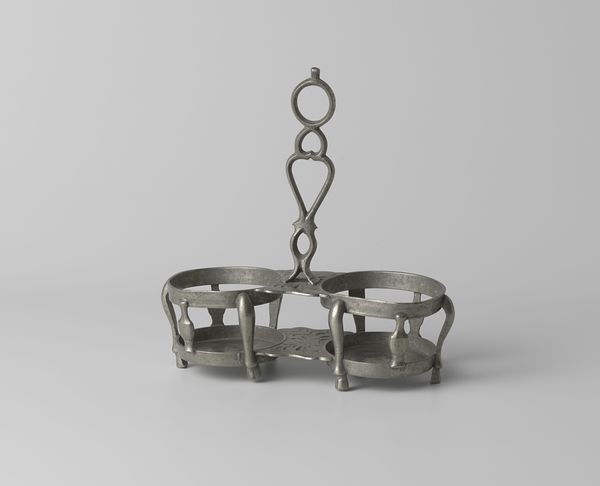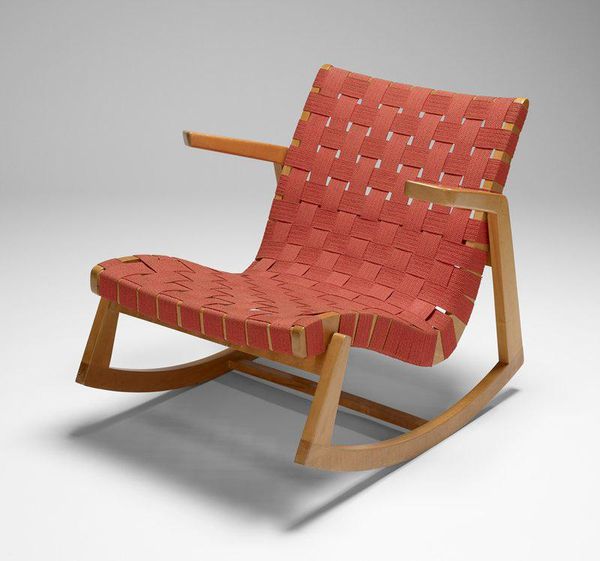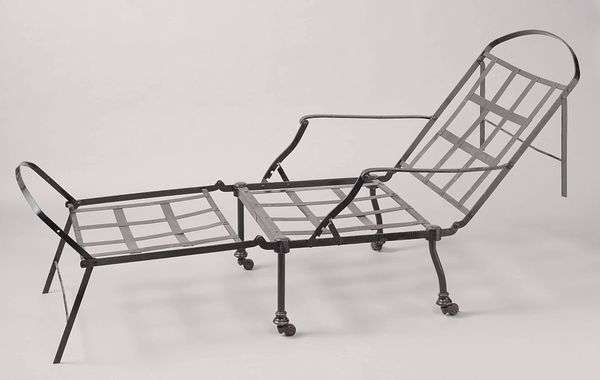
silver, sculpture
#
silver
#
sculpture
#
decorative-art
Dimensions: 3 1/2 × 3/4 in. (8.9 × 1.9 cm)
Copyright: Public Domain
Editor: Here we have a miniature silver trivet, a decorative piece dating from 1715 to 1735. Its size is striking, but the design appears quite functional. What story do you think this little sculpture tells? Curator: Well, the miniature size immediately raises questions of purpose and privilege. Was it a child’s toy, or a display of wealth, showcasing artisanal skill without practical function? Think about the socio-economic context. Silver signaled status. Editor: So it's less about its literal use, and more about its symbolism? Curator: Exactly. Consider the role of precious metals during the 18th century. Who had access to such luxury? The artistry becomes a commentary on power. This was a society built on extreme disparity. Even a trivet speaks volumes about this divide. Editor: That’s fascinating. The trivet becomes a microcosm of society itself. How subversive. Does the act of miniaturization carry a message as well? Curator: Absolutely! Miniatures often reflect a desire to control or contain. By shrinking everyday objects, the owner possesses a kind of mastery over the domestic sphere, re-emphasizing the power structures in the home. The “perfection” of form is for whose gaze and judgement? Editor: It gives me a lot to consider about power, class, and the representation of domestic life. Thank you for shedding light on how something so small can reveal so much. Curator: And thank you, this examination invites a deeper understanding of decorative arts as more than mere decoration. We've uncovered layers of social meaning embedded within its form and the history surrounding it.
Comments
No comments
Be the first to comment and join the conversation on the ultimate creative platform.

